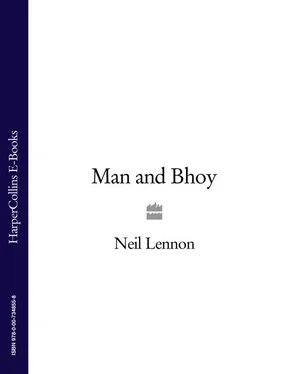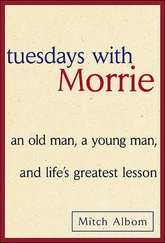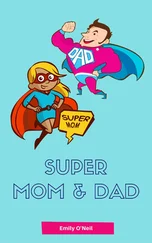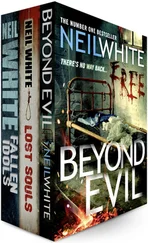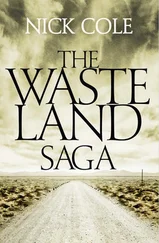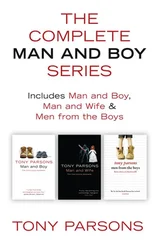1 ...8 9 10 12 13 14 ...19 One of the players was Noel Baillie, and he and I went right through the ranks at Hillsborough together before he went on to play for Linfield, the Belfast club traditionally associated with the Protestant and Unionist sector of the city’s population. Strange to think that the two of us, one who played more than 600 games for and also captained the ‘Rangers’ of Belfast and myself, who captains Glasgow Celtic, were once both wee boys in the same team.
Those were busy days for me, especially at weekends. I would play soccer twice a day on the Saturday, for Lurgan United in the morning and Hillsborough in the afternoon, and then turn out for my Gaelic football club on the Sunday. I was at the age when you felt you could play all day, every day. No one had heard of the phrase ‘teenage burnout’ in those days. I would pay for the excessive football a few years later, as you will learn in a later chapter.
My Gaelic football career was going very well, too. I seemed to have the natural ball-playing skills needed for both versions of football, and my ability to hit a long shot came in handy in Gaelic in particular. Playing for St Michael’s and Clan Na Gael, in total before I left school, I won Armagh county league championship medals at Under-13, Under-14 and Under—15 levels; two more Under-16 league medals and two minor league medals; plus an All-Ireland Community Games medal and a winner’s medal in the prestigious Herald Cup tournament.
The pinnacle of my school Gaelic football career came in an All-Ireland final. St Michael’s won through to the Under-161/2 Colleges B Championship which was played at mighty Croke Park in Dublin, the home of Gaelic football. It was a huge day for everyone at the school, but we were not fancied to beat the big strong team from Clane Community School in Kildare.
We were much more skilful, however, and I thoroughly enjoyed the game if not the match report in the local Lurgan paper—it mentioned something about me being ‘exciting to watch’ but spoiled things by adding ‘the red-haired youngster…spoils his performances occasionally with his fiery temper’. The anti-ginger brigade in the media had it in for me from the start, it seems…
We won a close match by a goal and three points (1-3) to four points (0-4), and instantly became heroes to the rest of the school. In that year I also played for Clan Na Gael’s Under-16 team which won the North Armagh championship, as our club performed the remarkable feat of winning the league at every age level.
Despite my Gaelic football success, soccer was more and more the main focus of my life. As I approached my final year in school, I was already set on a path to try to become a professional footballer, and senior clubs from Scotland and England were taking a great interest in me, including one rather surprising club indeed.
CHAPTER THREE First Steps on the Ladder
As I progressed through the ranks of school football and played for both Lurgan United and Hillsborough Boys Club, several senior teams in Scotland and England had begun to take a look at me with an eye to securing my signature in the future.
One club in Glasgow in particular seemed to begin taking a genuine interest. That club was not Celtic, but Rangers.
That is correct. Your eyes do not deceive you. I am relating the story here not to make any great fuss, but because it really did happen and in fact was reported in the local Lurgan paper at the time, though not with any great prominence. The first sign of interest from Rangers came after I played for the Northern Ireland Under-14 select against the Scottish Schools team in Stranraer. We won the match quite convincingly and I played particularly well that day. It was after that match that I came into contact with Harry Dunn, the well-known scout who would eventually help me to get a start in professional football.
He told me that Motherwell FC might be interested in giving me a trial, but a couple of weeks later he called the house to say that Rangers were also interested and would like to invite me to visit Ibrox Park for the day.
My dad was stupefied. But shortly afterwards we received a letter from Jock Wallace, the then manager of Rangers, confirming their interest in my future. You can read that letter and see the picture of me at Ibrox in the illustration section—proof positive that Rangers were following my progress as a fledgling footballer.
It was one of the few times in my life that I saw my father look absolutely stunned as he read the message on that Ibrox-headed notepaper. He just could not believe it at first, but when he realized it was serious he expressed his grave reservations about me ever signing for Rangers, not least because it could place my personal safety, and that of the rest of the family, at risk from the actions of extremists—given what happened to me when I was chosen to captain Northern Ireland, his fears were sadly justified.
Despite my father’s concerns I also consulted Dessie Meginnis and it was decided all round that I should go over to Glasgow to see what Rangers had to offer.
The visit took place after an international youth tournament at Ayr where I was lucky enough to be named best player in the Under-14 section. The Lurgan Mail reported that ‘Neill (sic) Lennon has attracted the interest of Birmingham City, Glasgow Celtic and Rangers.’ Later on it was reported that ‘13-year-old Neil Lennon accepted an invitation from a top Scottish Premier League side to view their set-up. Neil, who was accompanied by his father, enjoyed the experience and may well be invited back at a later date for a trial. The club asked that their name should not be disclosed at this stage.’
That is probably a reference to the fact that the whole situation of Rangers taking an interest in a Catholic schoolboy was very delicate, to say the least. At that time, because of their culture as the club of the Protestant and Unionist tradition, Rangers did not sign Catholics. The club had stated several years earlier that it would sign a Catholic if he was good enough, but funnily enough by the early 1980s, Rangers still hadn’t signed anyone of my religion. The first boy to sign for them who was reported to be a Catholic was John Spencer later in that decade.
It was obviously going to be problematic for me to sign for them and perhaps that’s why everything was kept pretty hush-hush, but I have never doubted that their interest in me was genuine, not least because Jock Wallace told my father face to face—and as people who knew him will recall, Jock didn’t do whispers…he could be heard out on the pitch!
With my father along to watch over me—and make sure I didn’t sign anything—I enjoyed my trip to Ibrox, in company with three other boys from the Northern Ireland Under-14 side. We were accompanying the Under-15 side which went to Glasgow to play a Rangers’ youth side, and after the game we four were given our own guided tour of Ibrox, including the dressing rooms and the trophy room, which was empty as usual—only kidding!
Ibrox was very impressive, particularly the marble halls, and Jimmy Nicholl, the Northern Ireland international who then played for Rangers, looked after us well. My dad had a conversation with Jock Wallace in which the Rangers manager said that he had known about me for some time. The subject of my religion was mentioned and my dad recalls that Wallace knew it would be a problem. Even so I was only thirteen and the time for deciding my future was a long way away, though even by then I was pretty certain that I wanted to be a professional footballer.
Over the next few months, Harry Dunn also assured me that Rangers were keeping an eye on me. The interest from Rangers was intriguing, but never came to anything. I reckon I would have been about fifteen or so when Graeme Souness took over and started the revolution which brought Rangers their first high-profile Catholic signing of the modern era, Maurice Johnston, and Catholics have played a considerable part in their subsequent success. Could I have been the one to break the mould before John Spencer and Mo Johnston? I don’t know, because the question never arose. Still, it’s certainly something to ponder.
Читать дальше
